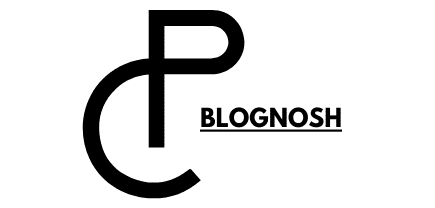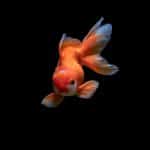Owning a cat is a joyful experience filled with warm cuddles and playful companionship. However, one aspect that you will inevitably confront is dealing with cat litter. Choosing the right type of cat litter can have a significant impact not only on your cat’s happiness but also on your cleaning routines and the overall smell of your home. There are various types of cat litters available, each with its unique features and benefits. In this article, we will explore different kinds of cat litters, their advantages, and how to select the best one for your pet.
Clay-Based Cat Litters
When you think about cat litter, the image that most likely comes to mind is that of clay litter. Clay litter has been a popular choice for pet owners for years due to its affordability and availability.
Lire également : How to choose a name for your pet
Clay-based cat litters are made from absorbent clay minerals, which absorb your cat’s waste effectively. There are mainly two types of clay litters: clumping and non-clumping.
Clumping Clay Litters
Clumping clay litters are typically made from bentonite clay, which forms hard, easy-to-scoop clumps when your cat urinates. This feature enables you to remove both liquid and solid waste, keeping the litter box clean and odor-free for longer.
Sujet a lire : What Are Effective Methods to Reduce Anxiety in Shelter Cats Before Adoption?
However, it’s essential to note that while clumping clay litters are convenient, they can be dustier compared to other types. If your cat or anyone in your household has respiratory issues, you might want to opt for a dust-free litter instead.
Non-Clumping Clay Litters
On the contrary, non-clumping clay litters are made from larger grains of clay that will not form clumps. While they are usually low in dust, they are not as efficient at controlling odor as their clumping counterparts because they do not absorb urine as well. Consequently, you’ll find yourself needing to change the entire box more frequently with non-clumping clay litter.
Dust-Free Cat Litters
As we have mentioned, dust from cat litter can cause respiratory problems in both cats and humans. If you’re looking for a solution, dust-free litters might be the answer.
Dust-free litters are usually made from materials other than clay, such as recycled paper, wood, or corn. They are designed to create minimal dust while still providing excellent odor control and ease of cleaning. Moreover, dust-free litters are often touted as being more eco-friendly than clay litters, which is an added bonus if you’re conscious about your environmental footprint.
Biodegradable Cat Litters
For cat owners who are environmentally conscious, biodegradable cat litters are an excellent choice.
Biodegradable cat litters are made from natural materials like recycled paper, wood, or corn. They decompose naturally in the environment and leave minimal waste. These litters also tend to be dust-free, making them an ideal option for those with allergies or respiratory sensitivities. Many biodegradable litters also excel at odor control, with some brands even adding natural scents like lavender or pine to further mask unpleasant smells.
However, it’s worth noting that biodegradable litters vary in their ability to clump. Some types, like corn or wheat-based litters, form strong clumps that are easy to scoop, whereas others like wood or paper-based litters do not clump as well.
Crystal or Silica Gel Litters
If you’re seeking an innovative and high-tech solution, crystal or silica gel litters might be just what you need.
Crystal litters are made from tiny silica gel beads, which are highly absorbent and excellent at controlling odor. One of the main advantages of crystal litters is their longevity – a single bag can last for up to a month for one cat, making them a cost-effective option in the long run. Moreover, crystal litters are almost dust-free, which is beneficial for those with respiratory issues.
However, some cats may not like the texture of the crystals on their paws. It’s also important to remember that while crystal litters absorb urine very well, they do not clump, so solid waste will need to be removed regularly to maintain cleanliness and odor control.
Choosing the right cat litter for your pet involves considering several factors, including dust levels, clumping ability, odor control, and environmental impact. Remember, the best cat litter will not only meet your needs but also provide comfort and cleanliness for your cat. Experiment with different types and find the one that works best for both of you. It’s all part of the wonderful journey of cat ownership.
Tofu Cat Litters
Another eco-friendly option for pet owners is tofu cat litter. Tofu litter is made from soybeans, which are both renewable and biodegradable. This type of litter is characterized by its exceptional absorption capabilities and minimal dust production – an essential attribute for cats or humans with respiratory issues.
Tofu cat litter is extremely soft, making it paw-friendly, even for kittens and senior cats. When it comes to odor control, tofu cat litter outshines many of its competitors. Soy is naturally odor-absorbent, which means it can effectively neutralize the unpleasant smell of cat waste.
A significant benefit of tofu litter is its clumping ability. When your cat urinates, the tofu litter forms firm clumps that are easy to scoop out. Plus, the clumps are safe to flush down the toilet, which not only simplifies the cleaning process but also reduces the amount of waste going to landfills.
However, tofu litter might not be the best choice if your cat is a digger. Because tofu litter is lighter than clay litter, it can end up scattered around the litter box if your cat likes to dig.
Pine Cat Litters
Pine cat litter is an all-natural, eco-friendly option that is growing in popularity. Made from repurposed pine lumber, this type of litter offers several advantages. Firstly, the pine scent helps to naturally control odors, providing you with a fresh-smelling home. Secondly, pine litter is lightweight, making it easy to handle and less messy than some other types.
Pine litter comes in both clumping and non-clumping variations. The clumping kind forms solid clumps when wet, making it easy to scoop out waste and extend the life of the litter. The non-clumping kind, on the other hand, absorbs the urine but does not form clumps. Instead, the wet pellets disintegrate into sawdust, which can be shaken to the bottom of the litter box to maintain freshness on top.
However, some cats might be put off by the strong pine scent or the texture of the pellets. Moreover, while pine litter is biodegradable, it can take a while to break down, so it’s not advisable to flush it down the toilet.
Conclusion
Choosing the perfect cat litter may seem daunting with so many options available, from clay litters to dust-free, biodegradable, silica gel, tofu, and pine variants. Each type of litter caters to different needs and preferences, offering unique benefits like low dust production, odor control, clumping ability, and ecological impact.
The best cat litter for you and your feline friend will depend on various factors, including your cat’s comfort, household allergies or respiratory conditions, and your environmental values. Therefore, experimentation is key. You might have to try a few different types before you find the one that suits both you and your cat best.
Remember, the primary function of cat litter is to provide a comfortable and clean space for your cat to do their business. Pay attention to your cat’s reactions when introducing a new type of litter. Their comfort and well-being should always be at the forefront of your decision. After all, a happy cat means a happy home.











